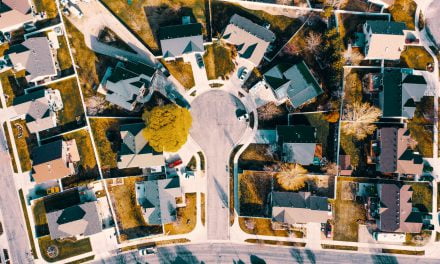41,027 homes closed escrow in California during June 2013. This home sales volume is 3.5% lower than one year earlier. The sales volume increases of the last half of 2012 began leveling off earlier this year and volume has now gone negative.
This sales volume drop is not a surprise to our readers. We’ve been saying for three months that this condition was underway – prophesied by past sales numbers and the weak end user participation in the market.
The bumpy recovery pattern continues. Home sales volume rose in 2009, fueled by end users clamoring after tax credits. Then, in 2010-2011, home sales volume fell back for lack of all types of buyers. It rose again in 2012, driven by speculator interference. And now we see it drifting downward again for lack of end user demand.
As we enter the second half of 2013, expect sales volume to continue to fall below last year’s levels, possibly significantly — a normal market response to the speculator-driven price bounce we just experienced. Further, the recent increase in mortgage rates will only hinder home sales volume.
California’s real estate sales volume needs about 60,000 homes sold monthly to fully recover. That recovery is dependent on 18-24 months of annual California job growth exceeding 350,000-400,000 jobs. We are nowhere close at this point in the recovery, but likely will be around 2016.
Related article:
Jobs move real estate
Other key factors controlling California’s housing market sales volume follow.
Absentee homebuyers: to hold or to fold?
Absentee homebuyers (speculators, buy-to-let investors and renovation contractors) accounted for 29% of Southern California (SoCal) June sales volume, up from 27% one year earlier. Absentee homebuyers made up 24% of Bay Area homebuyers in June, up from 20% one year earlier.
Speculators chase upward price movement, but sales volume is now softening and prices will slip next. Thus, the percentage of absentee buyers making up monthly sales will continue at today’s high level until prices start to slip, likely in the fourth quarter this year.
Cash purchases (two-thirds of which are made by speculators) remained abnormally high in June, representing 30% of SoCal sales volume. This is down from the record high set in February 2013 of 37% and roughly level with one year earlier. It appears a less solvent speculator is now entering the market.
The percentage of cash purchasers in a normal market is around 16%, comprised mainly of end-user buyers. By the end of 2013, the percentage of sales attributed to cash purchasers will drop as speculators react to slipping prices.
Bay Area cash sales were 26% of home sales in June 2013. This is slightly below one year earlier.
Speculators will remain motivated to buy only so long as they believe home prices will rise quickly. The high expectations of a quick resale have faced the headwinds of falling sales volume since November 2012. Will reality finally set in when prices follow volume and take a sympathetic nosedive this fall?
The annual increases in the buyer purchasing power index (BPI) came to an end in June, dimming the prospects of flipping for a profit Sellers ignore these trends at their peril.
When short-term speculators realize they cannot make a profit as soon as anticipated, they will quickly leave the market. The inventory they leave behind (today’s growing shadow inventory) will be consumed primarily by end users and income property investors. However, there aren’t enough of these buyers to sustain current sales volume. Thus, expectsales prices to remain level through and beyond 2014.
At the moment, demand from end users represents only half the number needed for a normal 60,000 monthly sales volume. End users currently have difficulty financing home purchases due to overpricing disclosed by appraisers (not their agents) and lender down payment and debt-to-income ratio requirements.
Related article:
Buyer purchasing power index falls slightly, remains high
Jumbo loans: room at the top
Jumbo loans (loans over $417,000) in SoCal accounted for 29% of June 2013 sales. This is up from 28% in the prior month and from 20% one year earlier. Jumbo loans made up a higher percentage of SoCal’s home sales market than at any other time since August 2007, when jumbo loans consisted of 37% of sales.
Jumbos made up 52% of Bay Area sales. This is up from 50% last month and up from 38% a year earlier.
Jumbo use has risen statewide as sales of high-tier properties have accelerated — particularly in the pricey Bay Area — since 2009. Despite this increase, jumbo use remains far below its peak in 2006-2007.
FHA Loans: a window is closing
Federal Housing Administration (FHA)-insured loans made up 19% of SoCal mortgage recordings. This is down from 20% last month, and 28% one year earlier.
FHA-insured loans made up 9% of Bay Area mortgages in June. This is down from 10% during the prior month and down from 16% one year earlier.
FHA-insured loan use across California is at its lowest level since late 2008. first tuesday anticipates the percentage of FHA-insured loans will steadily drop, hitting a bottom of 4% of loan originations around 2018. High (and rising) FHA insurance premiums make conventional loans with private mortgage insurance (PMI) more appealing, as they ought to be.
FHA buyer standards have also been tightened at this point in the recovery. Nonetheless, FHA-insured financing remains popular among determined first-time homebuyers with low savings and less than ideal credit scores, as a loan of last resort.
Related article:
FHA, PMI, or neither?
ARMs: holding lenders at bay
Adjustable rate mortgages (ARMs) made up 9% of all SoCal mortgages. This is up slightly from 8% in the prior month and 7% one year ago.
ARM use in the Bay Area was at 17% in June. This is up from 14% in the prior month and one year earlier. cash transactions in the Bay Area are slipping, a warning that prices are being supported by ARMs. If this trend continues into 2014, the Bay Area will clearly be in a bubble and due for a crash in sales volume and prices.
ARM use will remain relatively low statewide until property prices rise more than 5% annually over a two-year period. This is not likely to happen in the current price bounce. When it does, ARM use will increase as agents push homebuyers to overreach on amenity value, appraisers drift away from comparable pricing and lenders relax credit standards.
Re: California June home sales from DataQuick















Joe,
first tuesday does offer some information on San Diego County, including home sales volume and pricing. See the full article here: San Diego housing indicators.
Regards,
ft Editorial Staff
Just a few, Great info…..Are you all going to do info on San Deigo & east area?
Iam interested in opening a office in Hemet , Esco,,Temu, Merir, Lake Elsin, area.
Thanks…